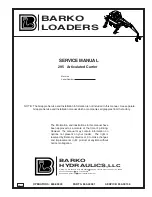
Spectrum analysis
R&S
®
RTO6
383
User Manual 1801.6687.02 ─ 05
However, if the maximum number of FFTs is lower than the required number to cover
the entire waveform, the waveform may only be analyzed partially. In this case, the
"Frame coverage" indicates the percentage of the waveform that was analyzed, i.e.
which part of the data was included in the FFT calculation.
Remote command:
CALCulate:MATH<m>:FFT:FRAMe:MAXCount
CALCulate:MATH<m>:FFT:FRAMe:COVerage?
Segment arithmetic
FFT analysis can only be performed on a maximum number of values at once. If more
values must be calculated, the input signal is divided into segments, each of which is
calculated separately. The segments need not be disjunct, that is: they may overlap, so
that some values have several FFT results. In this case, the arithmetic mode defines
how the final result is calculated from the individual results.
The following methods are available:
"Off"
The data of only one segment is considered. In effect, no arithmetics
are processed.
"Envelope"
Detects the minimum and maximum values for FFT calculation over
all segments. The resulting diagram shows two envelope waveforms:
the minimums (floor) and maximums (roof). These envelopes indicate
the range of all FFT values that occurred.
"Average"
The average is calculated over all segments.
"RMS"
The root mean square is calculated over all segments. The result is
the average power spectrum. If you measure the channel power on
this RMS spectrum, you get the same result as for the average chan-
nel power measurement on segments.
"MinHold"
Determines the minimum result for each input value from the data of
the current acquisition and the acquisitions before. Only available if
option R&S
RTO6-K37 is installed.
"MaxHold"
Determines the maximum result for each input value from the data of
the current acquisition and the acquisitions before. Only available if
option R&S
RTO6-K37 is installed.
Remote command:
CALCulate:MATH<m>:FFT:FRAMe:ARIThmetics
Overlap Factor
Defines the minimum factor by which two neighboring segments overlap. If the
required number of segments to cover the input values allows for more overlap, the
factor is increased.
The higher the overlap factor, the more segments are used. This leads to more individ-
ual results and improves detection of transient signal effects. However, it also extends
the duration of the calculation.
Remote command:
CALCulate:MATH<m>:FFT:FRAMe:OFACtor
FFT analysis
















































